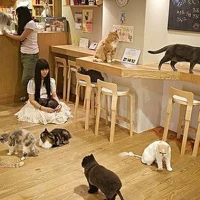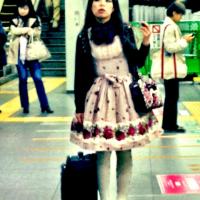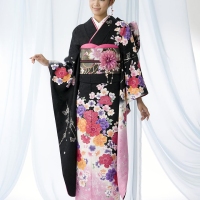From Fuji Rock to Freedommune: a music fan’s guide to summer in Japan

Music festivals in Japan: they’re a summer tradition, a rite of passage, and a brilliant way of spending the price of an overseas vacation in the space of a single weekend. As we ease into tinnitus season, things are already heating up: Fuji Rock has managed to pull together its strongest lineup in years, including a trio of A-list headliners, while arch-rival Summer Sonichas demonstrated unequivocally that you don’t actually need a good lineup if you want your event to sell out. The Big Four – which also includes the domestic-only Rock in Japan and Rising Sun – find themselves in an increasingly crowded (if not necessarily varied) market, as events like Hokkaido’s Join Alive, Aomori Rock Festival and Baycamp grow more ambitious in their scope. Meanwhile, jazz, techno, classical and world music fans will also find something of interest if they look in the right places – and some of it won’t even cost a penny. So slip on your wellies, stick in your earplugs and join us on a romp through the Japanese music festival scene…
The Big Four

Who’s playing: Bjork, Nine Inch Nails, The Cure, Skrillex, Mumford & Sons, Vampire Weekend, The XX, Flying Lotus, My Bloody Valentine, Jurassic 5
July 26-28 | Naeba Ski Resort, Yuzawa, Niigata
3 day ticket ¥42,800 adv, 1 day ticket ¥17,800 adv
The daddy of Japanese outdoor music fests is perhaps also the most demanding – whether it’s the expense, the ever-present rain, the exhausting scale of the site, or the fact that the two acts you most want to see almost always clash with each other. If you can forgive all this (and the fact that it’s nowhere near the eponymous mountain), Fuji Rock has an atmosphere that few festivals manage to replicate, and this year’s lineup is one of the strongest in recent memory. And if not… well, there’s always Summer Sonic. Event details

Who’s playing: Metallica, Muse, Linkin Park, Mr Children, The Smashing Pumpkins, Beady Eye, Pet Shop Boys, Cheap Trick, Earth, Wind & Fire, Fall Out Boy
August 10-11 | Makuhari Messe & QVC Marine Field, Mihama-ku, Chiba
2 day ticket ¥28,000 adv, 1 day ticket ¥15,500 adv
The appeal of Fuji Rock’s main rival can be summed up in a single word: convenience. Tickets are (slightly) cheaper, you won’t have to take any time off work, and the Makuhari Messe location is just a half-hour train ride from Tokyo Station. Once a straightforwardly rockist affair, Summer Sonic these days seems more concerned with ensuring that tickets sell out as quickly as possible, resulting in a Frankenstein’s monster of a lineup that feels like it was compiled by accountants rather than music fans. Event details

Who’s playing: Asian Kung-Fu Generation, Sakanaction, Kyary Pamyu Pamyu, Miyavi, Perfume, Quruli, Special Others, Shugo Tokumaru, The Hiatus, 9mm Parabellum Bullet
August 2-4 | Hitachi Seaside Park, Ibaraki
3 day ticket ¥30,000 adv, 2 day ticket ¥22,000 adv, 1 day ticket ¥11,500 adv
Few music magazines have a better grasp of what the public wants thanRockin’ On, the influential periodical behind this most repetitive of music festivals. Held at an attractive seaside park on the Ibaraki coast that seems to have been entirely purged of drunk people, Rock in Japan consistently sells out in advance each year, despite (or maybe because of) the fact that the lineup has more repeat performers than any other summer music fest. Event details

Who’s playing: Tokyo Ska Paradise Orchestra, Quruli, The Hiatus, 10-Feet, Sambomaster, Maximum the Hormone, Haruomi Hosono, Char, Misia, The Birthday
August 16-17 | Tarukawa Wharf, Ishikari Bay New Port, Otaku, Hokkaido
2 day ticket ¥18,000 adv, 1 day ticket ¥9,000 adv (Aug 16)/¥12,500 adv (Aug 17)
You’d be surprised how many Tokyoites make the pilgrimage to Hokkaido for this two-day affair, where the main stage keeps going until dawn on the second night. Like Rock in Japan, the lineup at Rising Sun consists purely of domestic acts, although they spread their net wider, and with less regard for commercial considerations. It’s also a gastronomic delight: look out for stalls selling locally farmed produce, seafood and craft beer. Event details
Weekend festivals and longer

Who’s playing: Kodo, Hiromitsu Agatsuma
August 23-25 | Shiroyama Park + other venues, Sado Island, Niigata
1 day ticket ¥4,700/¥5,200 adv, 2 day ticket ¥8,400/¥8,900 adv, 3 day ticket ¥13,000
Though they spend much of the year touring Japan and overseas, tireless taiko troupe Kodo return each summer to their base in Sado Island, off the coast of Niigata, to host this annual festival. Over two decades after it started, it’s easy to take Earth Celebration for granted, but those who bother to make the trip are seldom disappointed. Event details

Who’s playing: Saito Kinen Orchestra, Junko Onishi
August 17-September 7 | Kissei Bunka Hall + other venues, Matsumoto
Individual concerts ¥1,000-¥30,000
Septuagenarian conductor Seiji Ozawa has managed to lure jazz pianist Junko Onishi out of retirement for this year’s Saito Kinen Festival, but that’s just one of the attractions in a nearly monthly-long series of orchestra and chamber concerts, opera productions, workshops, and even programs for the kids. Event details

Who’s playing: Sakanaction, Sekai no Owari, Tokyo Ska Paradise Orchestra, Gary Clark Jr, The Hiatus, Flumpool, Rocket from the Crypt, Clammbon, Kemuri, Miyavi
July 20-21 & 27-28 | Iwamizawa, Hokkaido
1 day ticket ¥8,000-¥8,800, 2 day ticket ¥15,500
A Hokkaido amusement park provides the setting for this relatively young fest, which is spreading the action across two consecutive weekends for the first time this year. It’s a gambit that could go either way – as could the decision to introduce more overseas acts (including Gary Clark Jr and Yo La Tengo) to a lineup hitherto dominated by chart-friendly Japanese artists. Bit of an unknown quantity, this one. Event details

Who’s playing: Tony Bennett, Chick Corea, Lee Konitz, Orquesta Buena Vista Social Club, Bob James & David Sanborn, Bobby McFerrin, Ai Kuwabara, Matt Dusk, Larry Carlton
September 6-8 | Tokyo International Forum, Chiyoda-ku, Tokyo
Individual concerts ¥6,000-¥9,500, 1 day ticket ¥18,000; some events free
Japan’s biggest jazz event is also its least catholic. The three-day Tokyo Jazz Festival doesn’t balk at booking crooners (Burt Bacharach last year, Tony Bennett this year), and each indisputably great musician on the lineup (Chick Corea, Lee Konitz) seems to be counterbalanced by a soporifically smooth operator (we’re looking at you, Bob James and David Sanborn). The main concerts are supplemented by more intimate gigs at the nearby Cotton Club, plus free outdoor shows for people who are too cheap to buy a ticket. Event details

Who’s playing: To be announced
September 14-16 | Naeba Greenland, Niigata
3 day ticket ¥16,000 adv
Once you’ve tried Labyrinth, there’s no turning back. Revered by techno nerds worldwide, it must be one of the most fastidiously crafted dance parties on earth: attendance is capped at a few thousand people, the high-end Funktion One sound system is EQed to shimmering, pin-drop perfection – and they only bother to book acts who know how to make the most of it. Event details

Who’s playing: Oliver Mtukudzi & The Black Spirits, Ukandanz, Mariana Baraj meets Dos Orientales, Antonio Loureiro, Puntigam, Matchume Zango & Sakaki Mango
August 23-25 | Nanto Helios + other venues, Nanto, Toyama
Single stages ¥2,500-¥3,500 adv; some events free
Japan’s biggest world music festival takes place in Nanto, Toyama during the final weekend of August, where performances by acts from Zimbabwe, Brazil, Argentina and beyond (plus some of their local disciples) are supplemented by workshops and Caribbean-style street parades. You can catch many of the headliners at WWW in Tokyo the following week, but the atmosphere won’t be the same. Event details

Who’s playing: Bis, Negicco, Idoling!!!, Vanilla Beans, Weather Girls, Mariko Goto, Tokyo Girls’ Style, Dorothy Little Happy, Sakura Gakuin, Up Up Girls (Kari)
July 27-28 | Zepp Tokyo + other venues, Taito-ku, Tokyo
1 day ticket ¥4,800 adv, 2 day ticket ¥8,500 adv
In a bit of scheduling that we imagine is going to bother absolutely no-one, this all-out idol-pop assault is taking place on the same weekend as Fuji Rock. Expect to see over a hundred acts take to the stage over the course of the two-day Tokyo Idol Festival, though you’d need to be an über-nerd to know who most of them are. Event details

Who’s playing: UA, Towa Tei, Hitomi Toi, Tofubeats, Nabowa, Oorutaichi
September 14-15 | Alps Park, Matsumoto, Nagano
1 day ticket ¥6,500, 2 day ticket ¥12,000
The dominance of Japanese-only lineups on the music festival circuit wouldn’t be such a drag if rival events actually bothered to book different acts from each other. Kudos to this Matsumoto-based fest for keeping things avowedly left-of-centre – and for having such a gorgeously verdant setting, too. Event details
One-day fests and all-nighters

Who’s playing: Envy, N’Shukugawa Boys, Group_inou, Goma & The Jungle Rhythm Section, Hijokaidan, Kan Mikami, Dempagumi.inc, Ningen Isu, Zazen Boys, Totalfat
September 14 | Yogoshiyama Ski Area, Hiranai-machi, Aomori
¥7,000 adv
If you’re still looking for excitement in the dying days of the summer, head up north. The one-day Aomori Rock Festival likes to do things differently, from the ludicrously early start time (7am!) to the free slice of toast with each ticket order, to the lineup that finds space for workaday indie guitar bands, idol pop, avant-garde noise acts and legendary folk singer Kan Mikami. Event details

Who’s playing: Hikashu, Towa Tei, Shugo Tokumaru, Akiko Yano, Tamio Okuda, Rekishi, Scha Dara Parr, Ko Shibasaki, Ohashi Trio, Yukihiro Takahashi
August 11 | Yumenoshima Park, Koto-ku, Tokyo
Adults ¥8,500, elementary schoolers ¥1,050
It’s the only major summer music festival that actually happens within Tokyo, at a park right next to Shin-Kiba Station. Co-organised by YMO’s Yukihiro Takahashi, the single-day World Happiness is a family-friendly affair, with a decent kids area, special tickets for parents accompanying elementary school age children, and a lineup that’s unlikely to ruffle anybody’s feathers. Event details

Who’s playing: Penny Rimbaud, Boredoms, Yoshihide Otomo & Amachan Special Big Band, Keiji Haino, Isao Tomita + Steve Hillage, Milton Bradley, Towa Tei
July 13 | Makuhari Messe, Mihama-ku, Chiba
Free (with minimum ¥1,000 charity donation)
It may not have been the best music festival we went to last year, but Freedommune Zero <0> was easily the most audacious: a free all-nighter held at the same venue as Summer Sonic, with high-tech visuals and a bill that ran from noise godfather Merzbow to ’90s J-pop veteran Tetsuya Komura – plus the preserved brain of Meiji-era novelist Natsume Soseki. This year’s promises to be just as memorable, with highlights including a 91-drummer version of Boredoms’ Boa Drum project and appearances by Crass co-founder Penny Rimbaud and synth pioneer Isao Tomita. Event details

Who’s playing: The Stone Roses, Pet Shop Boys, Sakanaction, Denki Groove, Perfume, Steve Aoki, Justice, Klaxons, Breakbot, Fear, and Loathing in Las Vegas
August 8 | Makuhari Messe & QVC Marine Field, Mihama-ku, Chiba
¥9,800 adv
This Friday night warm-up party for Summer Sonic actually looks like the more appealing proposition, mixing nostalgia acts (The Stone Roses, Pet Shop Boys) with some more trend-savvy selections – plus enough surefire-draw local artists to ensure that it’s actually well attended. Event details

Who’s playing: Giorgio Moroder, Josh Wink, Sven Vath, Slam, Len Faki, Ken Ishii, Hell, Matias Aguayo, 2000 and One, Westbam
September 14 | Yokohama Arena, Kohoku-ku, Yokohama
¥11,500 adv
Techno DJ and Denki Groove member Takkyu Ishino held his first Wire all-nighter back in 1999, taking inspiration from Germany’s long-running Mayday parties. Held in the humungous expanse of Yokohama Arena, it’s the largest indoor party in Japan, with visuals and décor to match. Plenty to keep thrill-seekers happy, but serious techno heads would do better to skip this and go to Labyrinth instead (see above). Event details

Who’s playing: The Birthday, Zazen Boys, Eastern Youth, Dragon Ash, Husking Bee, [Champagne], The Telephones, Group_inou, Frontier Backyard, Kaisoku Tokyo
September 7 | Higashi Ohgishima Park, Kawasaki, Kanagawa
¥6,900 adv, under 18s ¥4,900 adv
After getting off to a promising start in 2011, this bayside all-nighter has significantly upgraded its lineup – with the unfortunate effect that it’s increasingly indistinguishable from every other summer music fest. Head to Higashi Ohgishima East Park, in the heart of Kawasaki’s industrial area, to catch sets by big-name guitar bands plus a few younger, hungrier acts. Event details

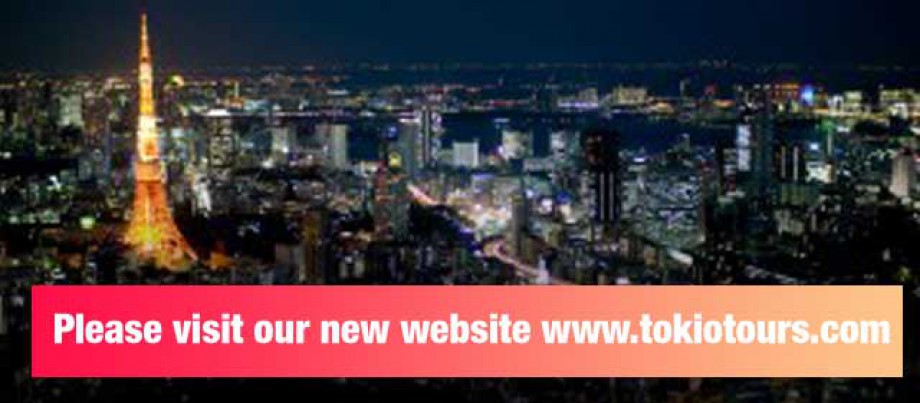





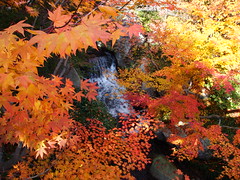






































 Takehisa was influenced by foreign cultures, and his goods showed an aesthetic meeting of East and West. For example, he designed coloured paper that he decorated with drawings of poisonous mushrooms. At the time, in Japan, that wasn’t done, but in the West in the early 1900s poisonous mushrooms appeared on cards or in illustrated books. He also designed chiyogamipaper with motifs such as umbrellas and matchsticks (pictured). At the time, chiyogamiwas usually printed with traditional yuzenpatterns, so his thinking was very innovative and a lot of people came to copy him. Takehisa placed importance on the cuteness of his designs and referred to them as kawaii. However, this is a rare example of the word being used at the time, as it wasn’t a commonly used word, as it is now.
Takehisa was influenced by foreign cultures, and his goods showed an aesthetic meeting of East and West. For example, he designed coloured paper that he decorated with drawings of poisonous mushrooms. At the time, in Japan, that wasn’t done, but in the West in the early 1900s poisonous mushrooms appeared on cards or in illustrated books. He also designed chiyogamipaper with motifs such as umbrellas and matchsticks (pictured). At the time, chiyogamiwas usually printed with traditional yuzenpatterns, so his thinking was very innovative and a lot of people came to copy him. Takehisa placed importance on the cuteness of his designs and referred to them as kawaii. However, this is a rare example of the word being used at the time, as it wasn’t a commonly used word, as it is now. Playing cards by manga artist Katsuji Matsumoto. Photo: Geoff Johnson
Playing cards by manga artist Katsuji Matsumoto. Photo: Geoff Johnson Handkerchiefs designed by Rune Naito. Photo: Geoff Johnson
Handkerchiefs designed by Rune Naito. Photo: Geoff Johnson Masako Watanabe’s classic kawaii girls in ‘Venus’, 1955-65. Photo: Geoff Johnson
Masako Watanabe’s classic kawaii girls in ‘Venus’, 1955-65. Photo: Geoff Johnson









































